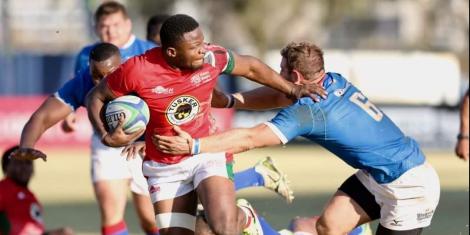
*Undated
The Sports, Arts and Social Development Fund has collected Ksh 30.3 billion since it was operational, Sports Cabinet Secretary Amb. Amina Mohamed has revealed.
The fund was established to offer support to sports federations, training and technical assistance .
According to the data the CS submitted to the Committee earlier this month, the fund’s oversight Board has so far approved the disbursement of up to Sh23.5 billion to sports governing bodies.
Coincidentally, almost all of the funding is focused on football so begs the question, where does this leave other sports which are in desperate need of development funds?
Rugby especially has seen a sharp decline in the recent past and the performance of the 15-a-side team which recently lost to Senegal before losing heavily to Namibia begs a lot of questions.
As was documented in a previous article in this column, Womens volleyball has seen no improvement since Kenya first participated in the Olympics. At the 2020 Olympics, Kenya lost by the same heavy margins that they lost at the 2000 Olympics and yet again failed to win a single set.
Basketball has seen some improvement of late, but still not enough to close the gap on Africa’s best sides. Boxing has been abysmal. No Kenyan boxer won a single bout at the 2020 Olympics or at the 2021 world championships. A far cry from the 1970s and 1980s when Kenya routinely won boxing medals at the Olympics and were Africa and Commonwealth games champions.
Clearly the four sports are in dire need of improvement which can be facilitated by funding from the ministry. It is incumbent on the officials in charge of these sports to come up with a proposal, and send the proposal to the Ministry of sports to request funding. The proposal would identify the key components required to raise the standards of the sport in order to improve Kenya’s fortunes on the African scene and on a global scale. Let us take a look at what such a proposal would look like for each sport.
Basketball
1. Funding should be requested to construct basketball courts all over neighbourhoods in Nairobi, Mombasa, Kisumu and other towns. Basketball is a sport that requires constant sharpening of skills. The best way to accomplish this is to make basketball courts available to the youth.
2. Request funding to construct basketball courts in primary schools. One of Kenya’s biggest weaknesses is that most players start playing in secondary school when they are 14 or 15. This is too late. The most optimal age to infuse the muscle memory required to be a good player is much earlier, such as age 8 or 9.
3. Indoor courts: To popularize the Kenya basketball league, there is a need to construct decent playing venues in towns like Mombasa, Kisumu and Nakuru. Having indoor courts in towns outside Nairobi is the first step towards having a viable professional league.
Rugby
1.Structured Youth Development is the key to success in rugby. Kenya cannot match Namibia and other top teams because Kenya players are of a low calibre. Their core skills such as ball handling, passing, tackling, positioning, tactical awareness, situational awareness, tactical kicking are all abysmal in Kenya.
Countries like Namibia and South Africa have centres of excellence: Schools where their top players are sent for 4 to 6 years to get drilled on these fundamentals. Kenya will never match Namibia unless they establish such centres of excellence. Namibia hammered Kenya 60-24 in the 2021 Stellenbosch challenge. A repeat of the same scenario that occurs every time Kenya faces Namibia.
2.Playing Fields: There is an acute lack of playing fields which leads many aspiring players to simply give up on their rugby dreams. With the imminent loss of Railway sports grounds, Kenya rugby is losing a ground that had for decades been a key staging ground for upcoming talent.
Volleyball
Identifying Talent
The key to volleyball is identifying talent and nurturing the talent.A program should be established to train coaches in how to identify talent in primary schools. Once the latent is identified, the players should be put in training programs and those who excel should be sent to centres of excellence.
Boxing
During Kenya boxing’s glory days, there were gyms that produced a disproportionate number of Kenya’s top talent. In particular, Dallas boxing club in Muthurwa and Nakuru boxing club produced nearly all of Kenya’s Olympic and Commonwealth games medalists of the 1970s and 1980s. Boxing officials should come up with a proposal to revive such gyms. Well equipped gyms with qualified coaches are a key component of the success of any country.
Counties should be encouraged to employ boxers the way parastatals like Posta and Railways did in the past. Such a competition would be an excellent way to give jobless youth a pathway away from drugs and crime and for some even employment and job training.
